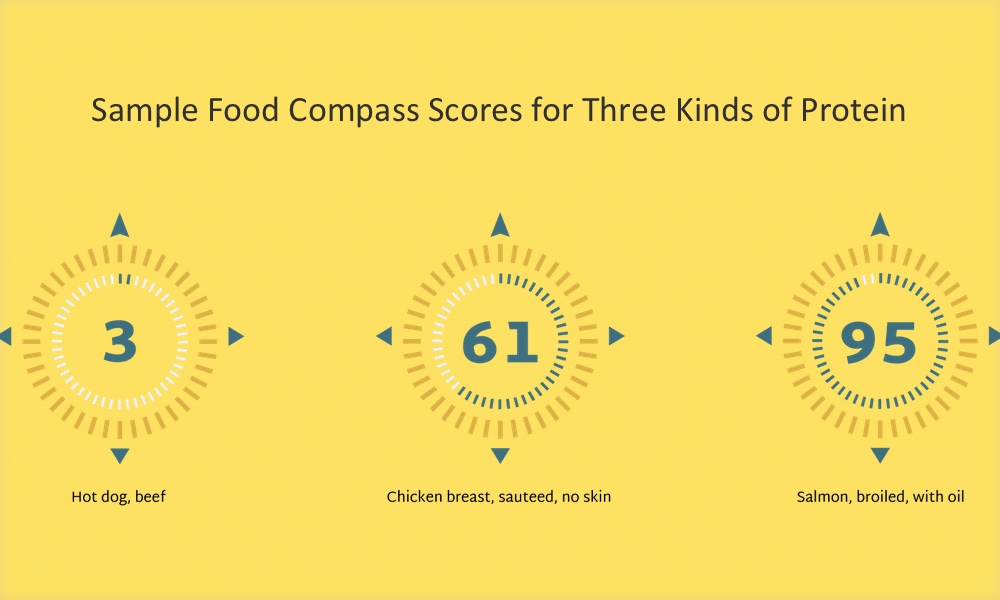There is no doubt that what we eat affects our health, for better and for worse. But with an ever-increasing number of food products available in the supermarket and on restaurant menus, it can be difficult to know what foods to choose and which to skip when trying to eat healthy. Luckily, help is available.
A nutrient profiling system that rank orders a wide range of food, Food Compass, can make it easier to identify foods that have the power to reduce or increase your risk of disease.
In 2021 nutrition experts at Tufts University’s Friedman School of Nutrition Science and Policy developed the Food Compass using a national database of 10,000 foods and beverages typically consumed by Americans. Food Compass scores for each food take into account ratios of key nutrients, vitamins, minerals, food-based ingredients, and additives.
Foods covered by the system earn a score between 1 and 100. Foods with a score of 70 or greater are considered healthy, and those that score between 31 to 69 should be eaten in moderation. A score of 30 or less is given to foods that should be eaten sparingly.On average, participants in the study had a Food Compass diet score of 35.5 out of 100, a sign of how poor the American diet tends to be.
To test the value of the Food Compass nutritional scores, Tufts researchers did a follow-up study. They used the nutrient rating system to see whether people who ate healthier, higher-scoring foods more often had a lower risk of disease and death. They assessed the diets and health status of nearly 50,000 adults between the ages of 20 and 85, using dietary records and health information gathered from the 1999-2018 National Health and Nutrition Examination Surveys (NHANES).
Participants whose diets rated higher on Food Compass weighed less, had lower blood pressure, and lower blood levels of glucose, cholesterol and hemoglobin A1c. Higher diet scores were associated with a lower occurrence of metabolic syndrome and cancer. There was a seven percent lower risk of death from all causes seen with every 10-point increase in Food Compass scores.
Sadly, on average, however, participants in the study had a Food Compass diet score of 35.5 out of 100, a sign of how poor the American diet tends to be.
The value of the Food Compass lies in its usefulness as a quick guide to making better food choices and as a more comprehensive assessment of a food’s nutritional quality than nutrition labels tend to offer. For instance, instead of simply measuring the amount of fat, sodium or fiber in a food, it evaluates the ratio of saturated to unsaturated fat or carbohydrate to fiber or sodium to potassium.
The study results underscore the idea that a diet guided by the Food Compass is a good predictor of better health. “Our findings support the validity of Food Compass as a tool to guide consumer decisions, as well as industry reformulations and public health strategies to identify and encourage healthier foods and beverages,” researcher Dariush Mozaffarian, explained.
The Food Compass is available to the public and can help hospitals, schools and workplaces procure and promote healthier foods. A simplified version of the nutrient rating system, as well as versions tailored to specific health conditions, are planned.
If you want to improve the quality of your diet with higher-scoring Food Compass foods, it’s as simple as eating more fruits and non-starchy vegetables, whole grains, nuts and seeds, beans and legumes, and using plant oils instead of animal fats. Ultra-processed foods, refined grains, and red and processed meat won’t get you as many points, so it’s best to limit these types of foods.
The study is published in Nature Communications.





